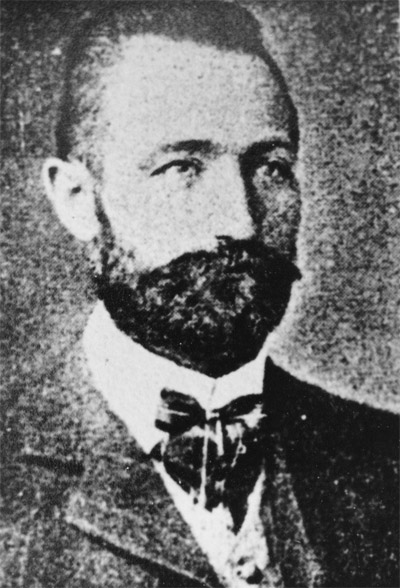 Edward Halsey
Edward Halsey
1898
When the company’s first baker, Edward Halsey, began preparing the first Sanitarium products in January 1898, he was driven by a desire to offer Australians healthier alternatives to the low nutrient and fat-laden foods that were common at the time. Trained at Battle Creek Sanitarium and invited to Australia by Willie White, he rented a small bakery in Northcote, Melbourne, where he produced the country’s first batch of ready-to-eat breakfast cereals. These included Granola (made of wheats, oats, maize and rye) and Granose (the unsweetened forerunner to Weet-Bix), as well as peanut butter, which had been patented by Dr. John Harvey Kellogg in 1895. By April 1898, Sanitarium Health Food Agency was registered as a business.
It wasn't long before the fledgling company relocated to larger premises adjacent to Avondale College in Cooranbong, New South Wales, just south of Newcastle. The existing sawmill on the property was converted into the new bakery to save money.
Like many businesses during this time of economic depression, it was a constant struggle to source working capital, but with much perseverance, sales began to climb.
In 1901, Halsey transferred to Christchurch, New Zealand, where he began making Granola, caramel cereals and bread for a health home.
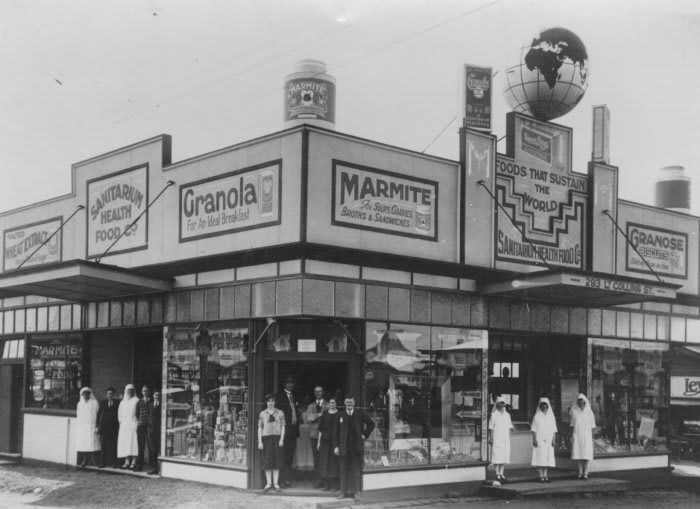 Sanitarium café in Melbourne
Sanitarium café in Melbourne
1902
In 1902, as the popularity of Sanitarium products grew, the company began opening cafés around Australia that offered customers wholesome, plant-based foods and cooking demonstrations. The first was located in Pitt Street, Sydney.
Again, operating funds were tight, but under the leadership of manager George Fisher, the Sydney café became a profitable business.
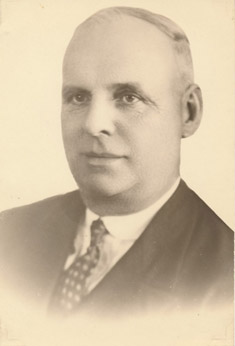 He asked one of the first café workers, Laura Lee, to train his café staff and give lectures and cooking demonstrations to the public on nutrition and the preparation of healthy meals. Miss Lee also experimented with new foods at the Avondale factory and became a renowned figure for her contributions to the health food work of the company.
He asked one of the first café workers, Laura Lee, to train his café staff and give lectures and cooking demonstrations to the public on nutrition and the preparation of healthy meals. Miss Lee also experimented with new foods at the Avondale factory and became a renowned figure for her contributions to the health food work of the company.
The café concept aimed to introduce people to a healthier way of living and was embraced by the community.
One customer was so impressed by the café fare when he visited the Sydney store in 1905 that he wrote asking for another meal to be prepared so that he could show his friends – more than 450 kilometres away! This prompted the Company to begin selling its products by mail order.
Over a six-month period in 1904, the Pitt St cafe served 8,000 customers. By 1939, this had increased to almost 100,000 customers over an equivalent period.
George Fisher went on to open cafés in Adelaide, Brisbane, Melbourne, Perth, and Hobart in Australia, as well as Wellington, Auckland, Christchurch and Dunedin in New Zealand.
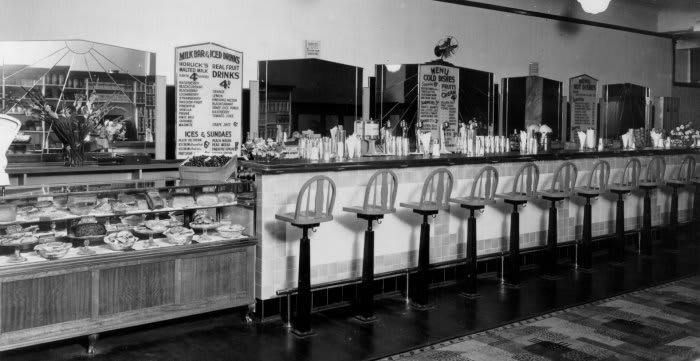
Sanitarium cafes and health food stores flourished for decades, but by 1988 changes in the buying habits of consumers prompted the company to close these outlets in order to partner with the growing supermarket age.
By this stage Sanitarium had developed a strong food production and distribution division which accounted for almost 90% of the business, establishing itself as a significant supplier to the grocery industry.
However, the foods sampled and sold in the cafes and retail shops introduced the public to many of Sanitarium’s now iconic products that are still produced today.
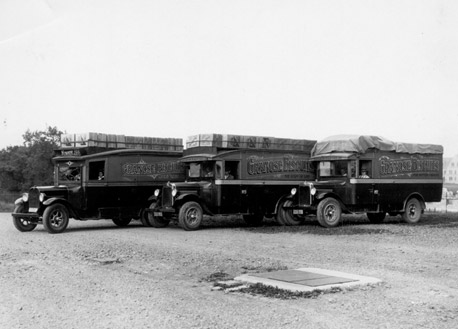 Granose Trucks
Granose Trucks
The original wheat biscuit
Sanitarium's original wheat biscuit, Granose, was produced after Dr J.H. Kellogg discovered the secret to rolling wheat flakes through his healthy food experiments at Battle Creek in 1894. (His brother Will later founded the Kellogg's cereal empire).
Granose was marketed in Australia and New Zealand during the early 1900s, not only as a breakfast cereal but as an alternative to bread. During the 1920s, Sanitarium faced a challenge to Granose from a new sweetened flake biscuit called Weet-Bix™, which was produced by a company called Grain Products, also connected to the Seventh-day Adventist Church. In 1928, Sanitarium acquired Grain Products and its Taverner Hill operations, making Weet-Bix™ its own.
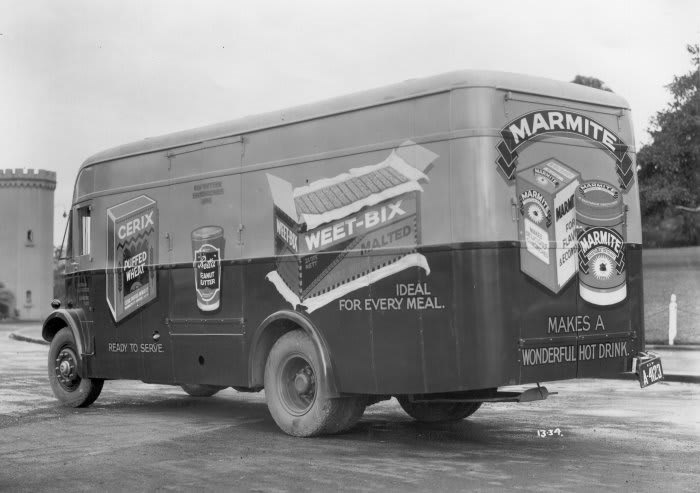 Marmite truck
Marmite truck
Feeding Marmite to the troops
Marmite was introduced to Australia and New Zealand by Sanitarium, initially imported from the United Kingdom. As an excellent source of vitamin B, Marmite was dropped from bi-planes to diggers stranded in Mesopotamia during World War I. It was also commandeered by the English government for its troops. Both world wars disrupted supplies, prompting Sanitarium to embark on the development of its own substitute.
After securing the secret formula from the English just before World War II, Sanitarium developed its own Marmite. In Australia, Marmite was made at the Cooranbong factory for the first time in 1944. Since the mid-1980s, all Sanitarium Marmite was produced at the Sanitarium factory in Christchurch, until the operation moved to Auckland in March 2019.

1920s
The first company-owned vehicle was a decrepit horse and old dray that carried raw materials from Morisset to the factory and the manufactured goods to the train station for delivery to Sydney. By 1902, both were so worn that a 35 foot launch 'Avondale' was built to transport finished product down Dora Creek to the station.
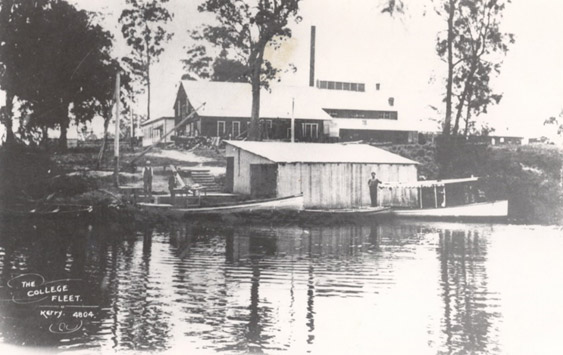
In the very early days in Sydney, one or two men pushed a hand cart up and down the streets selling product, but by the 1900s it became the job of horses and drays. As business improved in the early 1920s, sales representatives were supplied with motor bikes and sidecars. The first Weet-Bix vehicles were ten Chevrolet vans. In the 1930s, most branch managers proudly drove grey Buick cars.
Sanitarium purchased the first of many large vans in both Australia and New Zealand around 1928. These are fondly remembered for the beautiful artwork on the side and rear panels. In 1934, 'Big Bertha', a large Leyland truck that could fill a rail goods wagon with one load, was used to make quicker trips by road.
Sanitarium was an early pioneer in the export of foods to international markets, and was making its mark on South-East Asia as early as 1905. The company opened a small warehouse in Clarence St, Sydney – convenient to the wharves. Company records indicate initial shipments to Singapore in 1906, and within a few years sales were being recorded in South Africa, India, China, Malaysia, Burma and throughout the Pacific Islands.
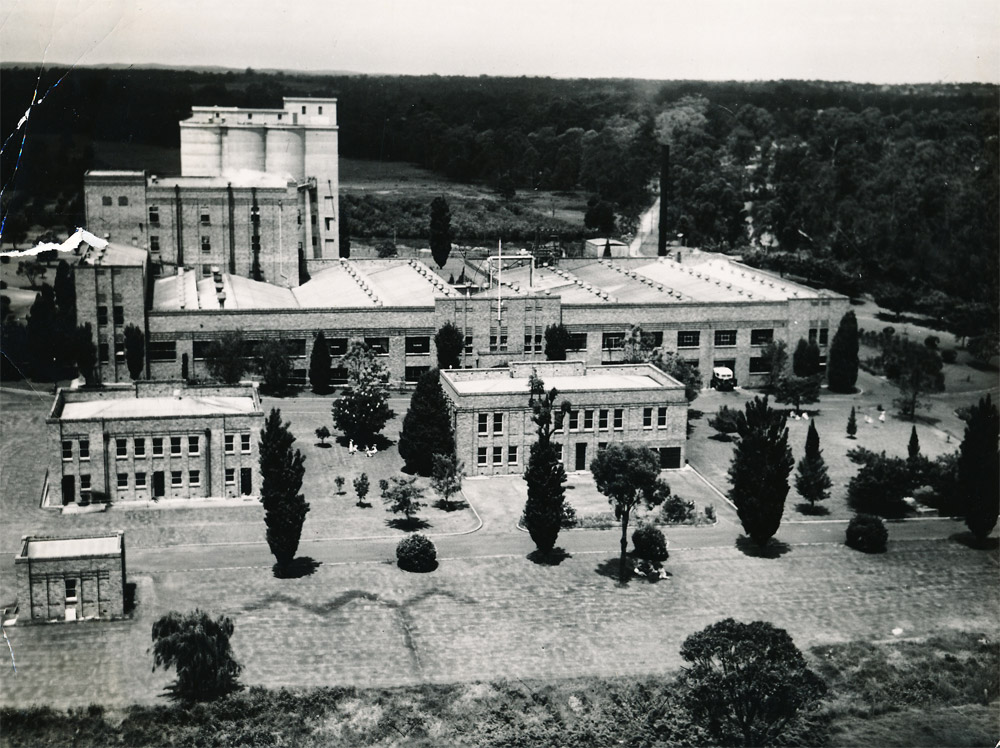
1940s
After World War I, Sanitarium moved its warehouse to Sussex St, and local wholesalers began buying its products and exporting them. By this stage meat substitutes Protose and Nutmeat, baked beans, savory lentils, and vegetarian sausages were all being produced. As the trade developed, Sanitarium appointed local merchants to act as agents in various markets, such as stationing a representative in Singapore in 1935 to look after its interests in South-East Asia. Sanitarium widened its product range and export trade after World War II, expanding into Africa, the Middle East, Mauritius, the Persian Gulf and North America.
In the 1940s and early 1950s, the company’s manufacturing facilities continued to expand to meet this demand. Factories were built or bought in all capital cities of Australia and were also established or expanded in New Zealand at Auckland, Palmerston North and Christchurch.
By 1987, Sanitarium opened a new distribution centre at Castle Hill in Sydney for all of the company’s products in New South Wales and a base for the growing export business in Asia, the Far East and the South Pacific.
It soon became apparent that the capacity of the Cooranbong factory was unable to meet demand, so a new factory at Berkeley Vale was opened in 1995.
Today, Sanitarium exports to 44 countries around the world, including its largest export market, China.
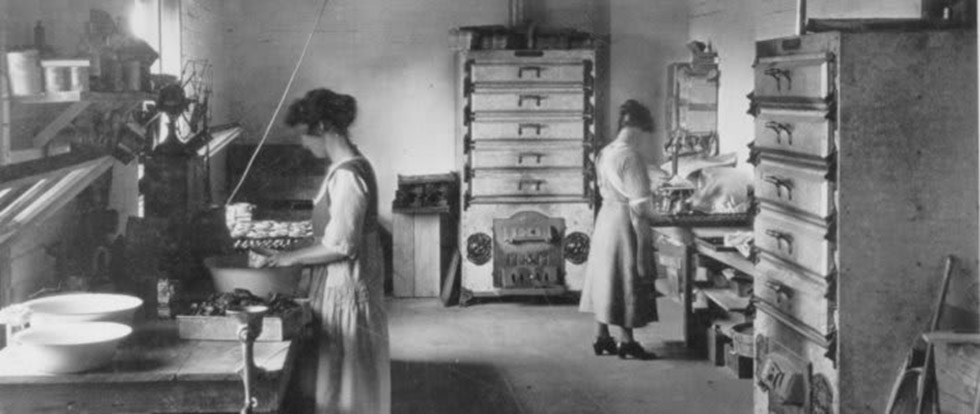
1960s
Sanitarium’s approach to advertising has always been guided by the principles of reliability, trustworthiness and good nutrition. In the early years, the best form of promotion for Sanitarium products came via word of mouth recommendations and referrals from chemists and doctors, as the foods were sold on their health benefits.
The first advertisement for Sanitarium appeared in Melbourne’s The Bible Echo, in 1897. Prior to 1920, most of the advertising conducted by the company was done by local retailers, who would put products on display in their windows.
In October 1922, the decision was made to begin placing advertisements in the leading newspapers in capital cities and some of the larger towns around the country. The first official campaign began later that year. By the mid-1920s, Sanitarium had become a household name.
The new medium of radio was explored during the 1920s and 1930s. Various programs including ‘Quiz of Quizzers’ and Queenie Ashton’s ‘Kommonsense Kitchen Klub’ were sponsored by Sanitarium at this time. Late in 1930, Sanitarium moved into gift-coupons, which were a popular advertising strategy of the day. The practice of inserting collector cards in boxes of Sanitarium Weet-Bix began in 1942, and continues with collectible stickers today.
From the mid-forties onwards, Sanitarium’s advertising campaigns began to address the changing nature of the Australian breakfast. During the 1960s and 1970s, Joan Bateman presented a weekly ‘Taste for Food’ TV segment which demonstrated vegetarian cooking techniques using Sanitarium products. Television advertisements for Sanitarium products began appearing from the early 1960s. One of the earliest advertisements was for its Honey Weets breakfast cereal.
The Company strategically held cooking demonstrations on local television wherever they had retail shops and in new shopping centres, seeing direct results in the sales figures.
 Weet-Bix on the production line
Weet-Bix on the production line
1985
Aussie kids are Weet-Bix kids
Of all the Sanitarium advertising campaigns, there is one that has captured the hearts and minds of Australians like no other. In 1985, Sanitarium launched the ‘Aussie kids are Weet-Bix kids’ jingle, and it quickly cemented its place as the breakfast anthem for generations of families.
Millions of Aussies are proud to call themselves Weet-Bix kids – it has become a quintessential expression of what it means to be Australian. Many of the nation’s most famous faces are too, with soccer sensation Tim Cahill and surfing superstar Stephanie Gilmore among the big names who embody the spirit of the much-loved breakfast cereal.
The Weet-Bix brand has also become synonymous with sport, teaming up with Cricket Australia, the Australian Wallabies rugby team, soccer star Tim Cahill, professional surfer Stephanie Gilmore, and other stars of the sports field.
Hundreds of thousands of Aussie kids have participated in the iconic Sanitarium Weet-Bix Kids TRYathlon, a self-esteem building rite-of-passage which has been running in Australia since 1999.
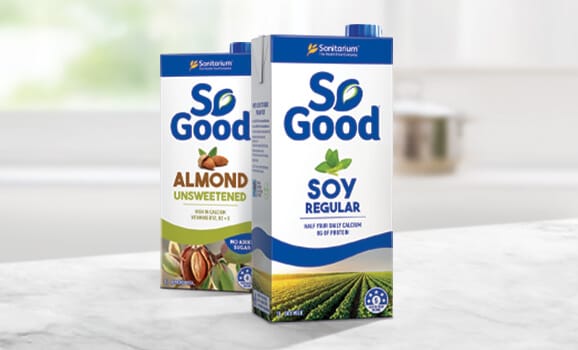
1986
So Good
Sanitarium began researching soy drinks in 1956 after a visiting American medical missionary, Dr Harry Miller, shared the knowledge he had gleaned through his soy milk experiments in China. Using Miller’s recipes, Sanitarium’s Cooranbong scientists produced two similar products, but a strong bean flavour remained that was unpalatable to the general public.
It was 1984 before interest in soy milk regained momentum, after a couple of US salesmen left behind a bag of soy protein isolate. Sanitarium’s research and development team experimented with it until they gradually developed a milk-like drink. Following a small trial in 300ml milk cartons at Oak Dairy Company at Hexham, New South Wales, the idea to package it in a Tetra Pak was floated. The first commercial batch of So Good Regular was produced at the Dairy Farmers site in Ultimo in 1986.
Today, the So Good brand is a household name. It has a large range of successful plant-based milks, and has recently released a barista range under its sister brand, Alternative Dairy Company.
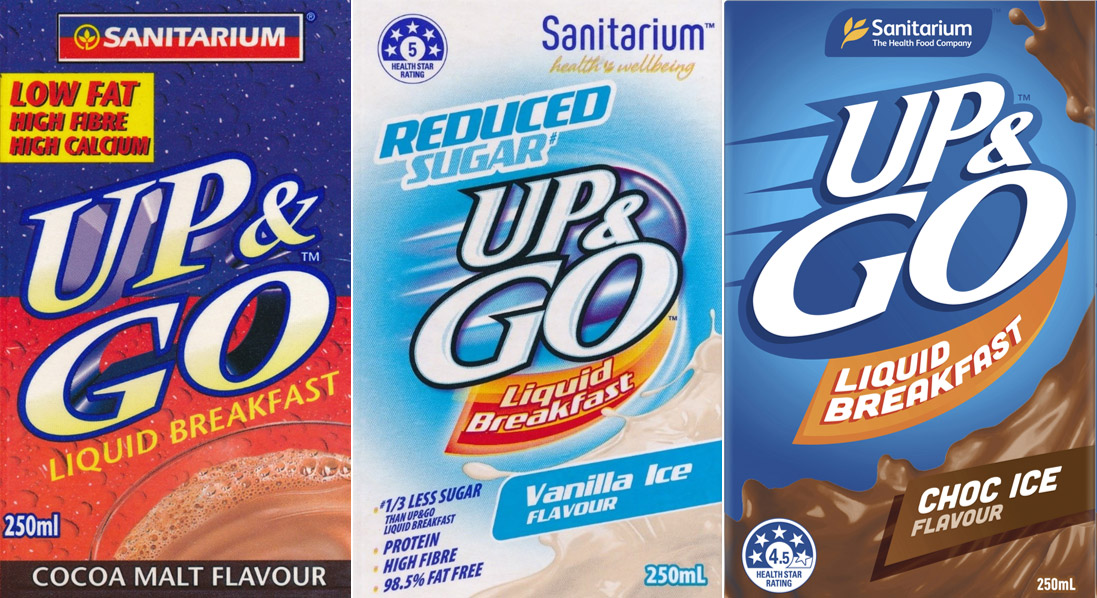
1998
UP&GO - Changing breakfast habits
While the benefits of a wholesome breakfast were well established, by the early 1990s the pace of modern life saw a new trend taking hold – breakfast skipping.
This inspired our nutritionists and food scientists to create a convenient and nutritious breakfast option for busy people. In 1998 we launched UP&GO™, containing the essential protein, energy, fibre, vitamins and minerals that time-poor people need to power through the morning.
Creating a liquid breakfast category in a world-first innovation, it proved to be a product idea that would change the breakfast landscape for decades to come.
Sales of UP&GO grew into the top 10 of the breakfast category in 2003, only six short years after product’s inception, and in 2012 it became the number one breakfast brand. In part this was due to the credible reputation and brand Sanitarium has built on the back of offering quality, healthy products.
Fast forward to today and life hasn’t slowed down - in fact, it’s even faster - and UP&GO is still the top selling product in the breakfast aisle.
Our most recent addition to the UP&GO family is UP&GO No Added Sugar, which has the same amount of sugar as a glass of regular milk.
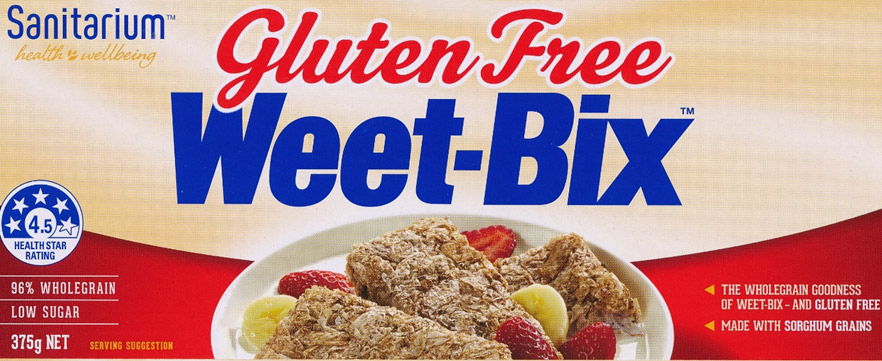
2014
Going Gluten free
In 2014, Sanitarium did what sounds like the impossible. It introduced Weet-Bix without wheat. When word got out, consumers were excited. Hundreds of thousands of Australians who were unable to consume gluten were able to return to their favourite Australian breakfast – a bowl of Weet-Bix.
Within the first month of its launch, more than 130,000 people had purchased a box of Gluten Free Weet-Bix, with more than a third returning for a second box. Gluten Free Weet-Bix continued to sell well throughout its first year, with more than 21 million serves enjoyed by Aussie consumers, making it one of the most successful launches of a new grocery product in decades.
This innovative new product became a reality in a matter of months and included an incredible overhaul of Sanitarium’s factory in Carmel, Western Australia to an entirely gluten-free facility in a matter of days.
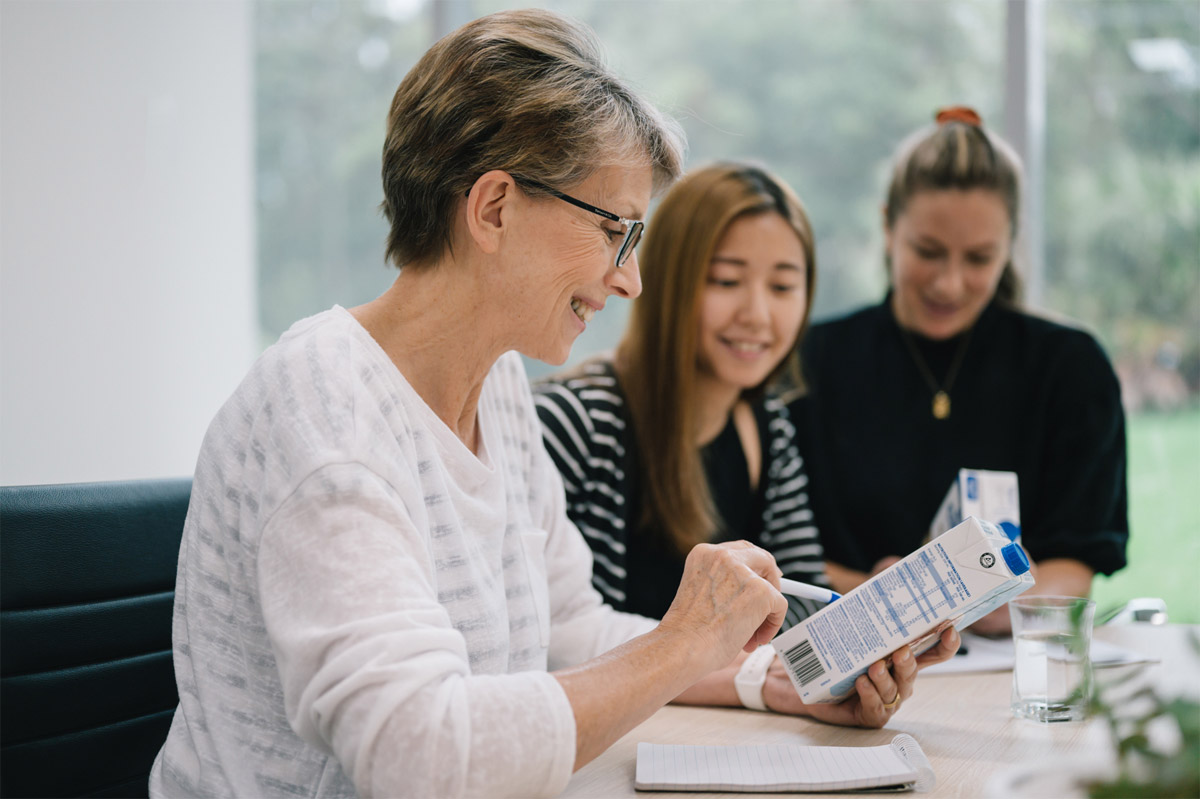
As the era of the retail health food shops drew to a close, in October 1987, the company launched a professional support system to champion nutrition education, which drew on its long history of teaching the benefits of plant-based eating.
The Sanitarium Nutrition Service operated for 21 years and greatly influenced Sanitarium’s nutrition reputation with government and consumers. The team answered thousands of consumer enquiries about nutrition and vegetarianism, published cookery books, gave cooking demonstrations and attended trade fairs, before folding to invest in future ways to engage people in health and wellbeing.
However, the service lives on today through Sanitarium’s Nutrition Insights team, which supports the development of educational materials and recipes, provides nutrition advice for product development and plays an important role working with government and industry on food industry policies. The team also supports the “Ask a Nutritionist” inquiry line, continuing this free service for consumers.
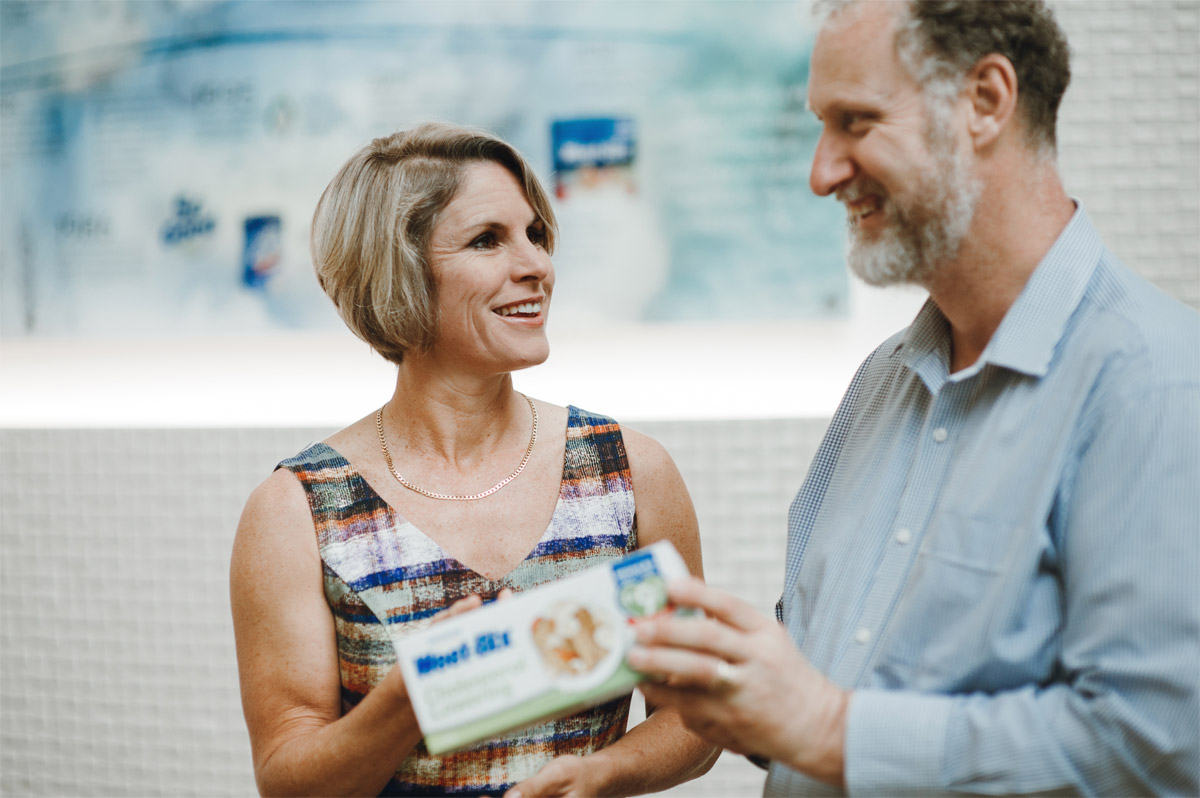
Sanitarium’s Advanced Nutrition Unit is a small team dedicated to identifying and developing solutions for people living with altered or diagnosed nutritional needs. Its first product, Weet-Bix Cholesterol Lowering, was launched in 2017 and is the first cereal in Australia to include the Heart Foundation’s recommended two grams of plant sterols per serve. In recognition of this innovation, Weet-Bix Cholesterol Lowering was named Australian Healthy Food Guide’s 2017 Product of the Year. The Advanced Nutrition Unit is currently partnering with research organisations such as the Hunter Medical Research Institute, CSIRO and leading clinical researchers from several Australian Universities.
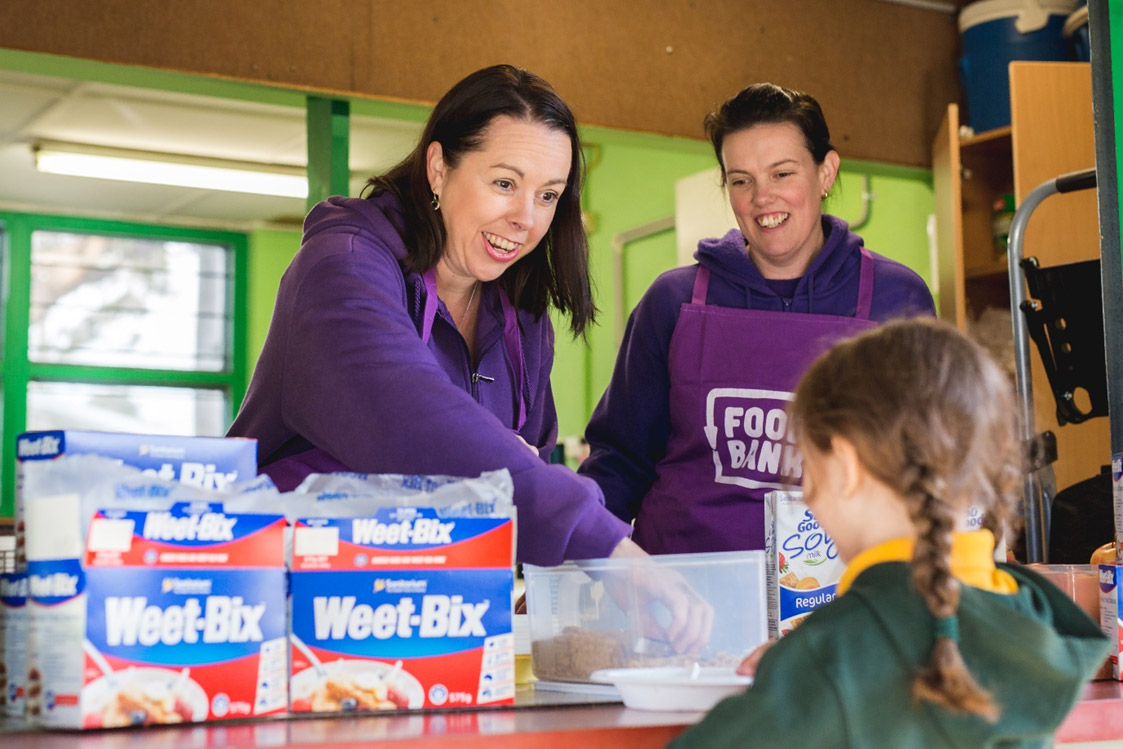
In keeping with Sanitarium’s ethos of nutrition and healthy living, Sanitarium also partners with a range of charities, both locally and throughout the South Pacific.
Good Start Breakfast Clubs, run in partnership with Foodbank Australia, Kickstart for Kids and the Australian Red Cross, give thousands of disadvantaged children a healthy start to their day while promoting good social and learning outcomes, equating to over 1.5 million serves of Weet-Bix, So Good and Marmite products each year. Sanitarium has also partnered with Foodbank Australia since 2010 through a collaborative pack arrangement, to tackle the serious issue of food security. This has resulted in over 2.3 million serves of Weet-Bix product donated to the many Australians seeking food assistance.
Sanitarium has been a partner of World Vision since 1984, contributing a total of over $400,000 to support the 40 hour famine and the Youth Ambassador Programme.
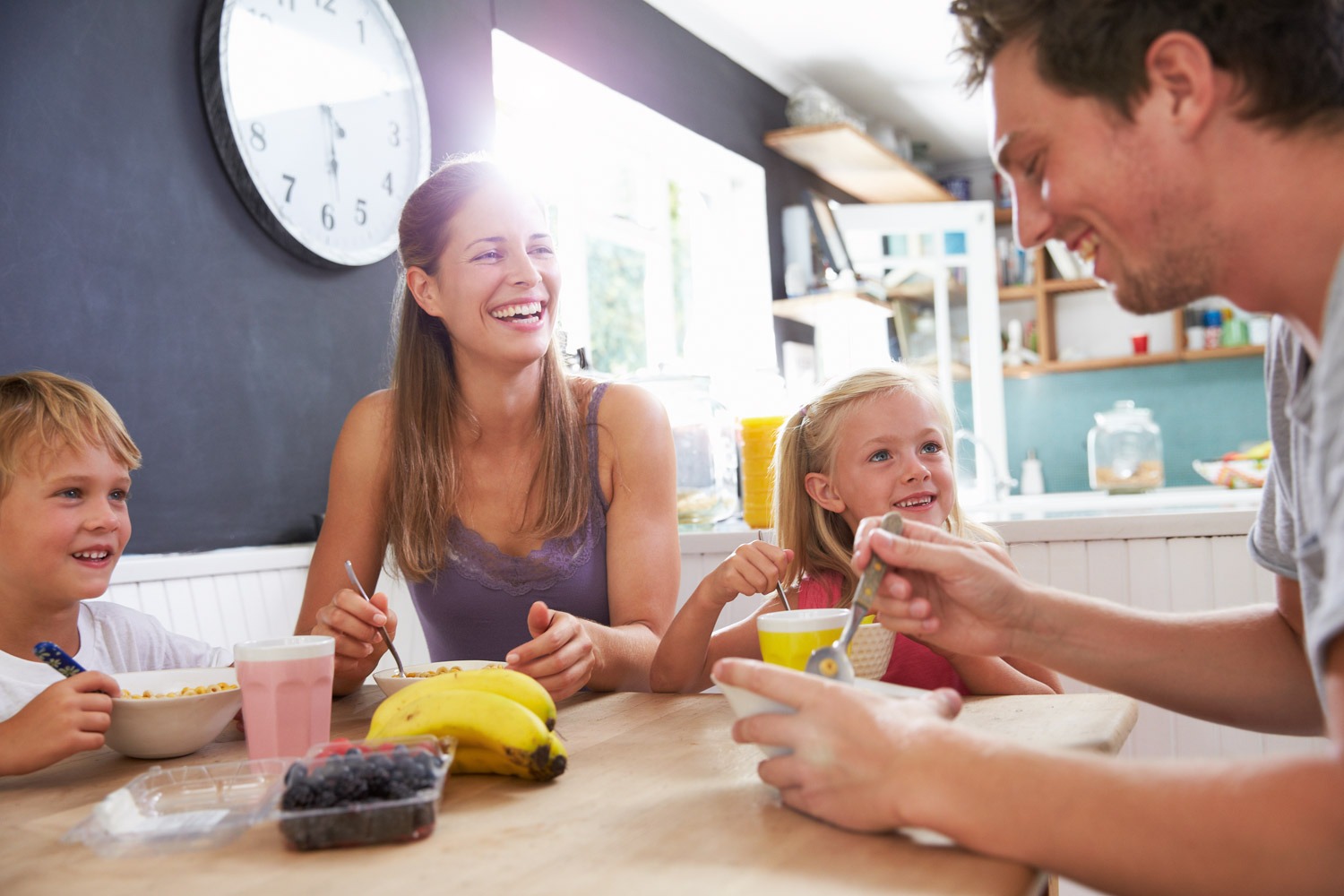
Now, 120 years on from our humble beginnings, our company continues to evolve to meet the health demands of consumers – from producing Gluten Free Weet-Bix and UP&GO, to helping address lifestyle diseases through the innovation of Weet-Bix Cholesterol Lowering.
In 2019, Weet-Bix was again voted Most Trusted Breakfast Food in the Reader's Digest Most Trusted Brands survey. It was the seventh consecutive year the iconic Sanitarium brand had won the highly coveted title.
While the win reaffirmed Australia's love of the original wheat biscuits, it is testament to the founding philosophies of Sanitarium and its unwavering commitment to three key principles of its food – healthy, affordable, accessible – that Weet-Bix retains the trust of Australian families looking for the best start to their day and is more popular than ever.
This recognition is appreciated all the more because our commitment to sharing our health knowledge has not wavered. From providing education through our cafes and retail shops, to our Sanitarium Nutrition Service, to our current food and nutrition marketing program on our digital platforms, our mission of helping communities to be healthy has never been more important.